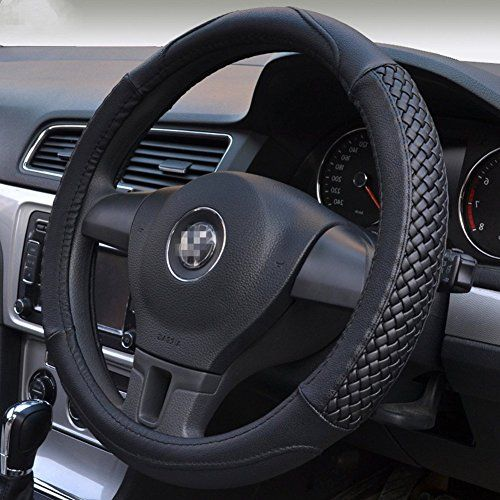Have you ever wondered why regular oil changes are crucial for your car’s performance and longevity? Oil plays a vital role in lubricating the engine components, reducing friction, and carrying away debris. Over time, however, the oil in your car becomes less effective, necessitating a change. In this article, we will explore the signs that car needs oil change, to help you maintain optimal engine health.
An essential aspect of vehicle maintenance is an oil change. It lessens engine wear and tear and keeps the engine operating smoothly. By guarding against dirt and other impurities, it also helps your automobile last longer.
In a contemporary auto repair shop, changing the oil in your automobile is often a quick and simple process. Your vehicle’s health depends critically on the lubricating oil you use. Why do so many people wait until there is an obvious issue before replacing their oil? Good, clean oil enhances your car’s performance and increases the engine’s lifespan.
Table of Contents
Read: 8 Benefits Of Changing Oil On Time
Signs That Car Needs Oil Change
Every 3,000 to 7,500 miles or at least once a year, whichever comes first, oil changes are required. Here are a few signs that car needs oil change:
Knocking sound from the engine
As your engine operates, oil lubricates the moving parts to prevent them from rubbing against one another. However, if the engine oil is too filthy, it cannot lubricate the engine sufficiently. As a consequence, your engine’s moving parts stop smoothly gliding over one another, which increases engine noise.
Between engine parts, the oil serves as a barrier to stop metal-to-metal brushing and maintain engine silence. Increasing engine noise is a sign that your oil isn’t working properly. In dire situations, you could even hear banging or rumbling noises, which means your engine is running low on oil and is steadily killing itself.
Dark Textured Oil
The oil becomes dirtier and darker as it travels through the engine. It’s time to replace the oil if you see unclean oil on the dipstick.
As engine oil circulates through the engine, it gathers debris, and over time, the oil darkens. You won’t notice the colour change if you never check your oil. Check your oil frequently as a result.
Turn off the engine, then remove the dipstick to check your oil. Put the dipstick back into its tube by pushing it in after wiping the oil off of it with a cloth. Check the oil level indicated by the mark on the dipstick by removing the dipstick. Verify the oil’s consistency and colour while checking the status.
You need to replace the oil in your car if the oil is gritty, has a dark colour, or is on or below the low mark.
Low oil level
The engine is shielded from harm, which is one of the advantages of changing the oil. By having your car serviced as soon as you notice a low oil level, you can be watchful for the same.
Every automobile owner should be aware of the location of their oil dipstick and often check the level. This enables you to monitor oil use, colour, and condition and fix issues before they get out of hand. Though once a month is normally safe, you should check your oil level every week.
When you check the oil level using your dipstick, it might imply a lot of different problems. First of all, it’s common for certain engines to require a little oil in between oil changes. The precise quantity varies with time, from manufacturer to automaker, and from model to model. For example, it is typical for the engine to consume up to a quart of oil between oil changes in some Honda Accords from the 2000s. This oil is burnt off rather than leaking.
You’ll need to top it up if the oil level is below the safe level shown by the oil dipstick (some dipsticks use full and safe markings, while others use hash marks to indicate the safe range). The bottom mark on the dipstick often denotes a one-quart low engine. You could be good with a simple top-off if you are within the mileage range for your oil service.
It’s crucial to get your oil changed, though, if you have reached or beyond your oil change mileage. Additionally, make sure the technician you select checks for oil leaks when doing the service. As was already noted, some oil consumption can be normal, but it might also be a sign of a gasket leak or other issues.
Oil Change Light
The check engine light, battery light, and other crucial warning lights are all located on your dashboard. Additionally, an oil check light is included. This red light has an oil that can form with a drip flowing from the spout. Since your automobile is genuinely informing you that it needs an oil change, this is one of the simplest oil change indicators to understand.
As soon as it is safe to do so, pull over and turn off your engine if this light illuminates while you are driving. The light might mean a few different things, but it often turns on when the engine’s oil pressure falls below acceptable limits. Typically, this is caused by the engine having insufficient oil. It may also indicate that the pump or transmitting unit needs to be changed if it is defective.
As soon as it is safe to do so, check the oil level. You must top it off with new oil if it is low. After adding oil, start the engine and check to see whether the light comes on. If so, change the oil as quickly as possible, and ask the mechanic to look for any leaks that could have contributed to the low oil situation.
It is advised to call for roadside help if the light does not turn off since it indicates that there is inadequate oil pressure in the engine, most likely as a result of a broken oil pump. Only a few engine types can run at very low oil pressure without suffering too much harm. It’s best to take extra precautions and request a tow.
A Burning Smell
Smoke coming from the exhaust pipe of the car indicates that the oil is no longer suitable for the engine. An ordinary oil change can fix the issue.
Have you detected a burned oil odour inside your car? If so, your engine’s oil levels are probably inadequate. Your engine stays cool thanks to motor oil. Insufficient fuel causes your engine to overheat and emit a burning smell.
An oil leak may also be indicated by a burning odour. Oil leaks are major issues that require quick attention. If you notice a burning smell inside your automobile, schedule maintenance right away.
The exhaust from your automobile will often be mostly undetectable and smell somewhat. In contrast to diesel engines, which emit exhaust that is mostly black and soot-like, gasoline engines emit very little coloured exhaust. In chilly weather, you could also see a visible cloud coming from your exhaust; this is mainly water vapour, and it will disappear as the engine heats up to operating temperature. However, if you discover that your exhaust is emitting blue-tinged smoke, there may be a problem.
Blue smoke is often brought on by oil leaking into the engine and burning with the gasoline. Additionally, the oil in your engine will be low. Another possibility is that the oil is pouring onto the exhaust system due to an external oil leak. Keep in mind that if your exhaust is greyish, your engine is burning “rich”—too much gasoline is being burned—and this is most likely the culprit.
Vibrations when idling
You’ll feel unusual vibrations when replacing the oil, especially when the car is idle.
Idling is the practice of leaving a car’s engine running while it is stationary. In traffic, drivers are occasionally compelled to idle, but this is not always essential. Drivers may change their tendency of idling, especially after learning how detrimental it can be to their health and the environment. Additionally, idling costs car owners a lot of money.
More travel than usual
We depend on our automobiles to bring us to and from work, to and from the grocery, and for other things as well. We also depend on them to transport us over greater distances; a prime illustration of this is your annual vacation. Long drives, though, put a lot of strain on the engine and the engine oil. Before leaving on your trip and again after returning, you should get the oil changed. Although, why?
Oil deteriorates more quickly with prolonged usage and at high temperatures than under regular use. The oil will lose its capacity to lubricate considerably more quickly, darken more quickly, and take up contaminants. Before and after a lengthy trip, you should change your oil to avoid accidentally damaging the engine by using oil that has lost its lubricating properties.
Because, probably, your used car has already logged some miles, you need to be even more vigilant about oil changes if you own one. It is advised that you plan or do oil changes more regularly as the mileage on your car increases and that you use oil that is specially made for high-mileage automobiles.
Find a safe place to pull over and let it cool if you detect your coolant gauge reaching hazardous levels (yellow or red on the gauge). Check the oil level while the engine is cooling. Before going to a mechanic, it must be topped up if it is low. Additionally, you should check your coolant level, but wait until the engine is cooled before doing so. Radiator or reservoir explosions from hot coolant might result in severe burns.
Check the coolant level once the engine has cooled, and fill it up if required. Run your engine as little as possible if it is overheating since doing so might shatter the engine block, thereby destroying the engine.
Overheating
Low oil levels are typically not related to overheating, even though they need to be. Low oil can also cause the engine to overheat, but low coolant is generally noticeable. Even if your coolant level is normal, this might still happen. The engine will continue to heat up if there is insufficient oil since it won’t have a chance to cool. As a result, the engine coolant has a tougher time removing extra heat, which causes your temperature indicator to start rising (note that your temperature gauge indicates coolant temperature, not oil temperature).
Car Stalling
Numerous fail-safes are built into many modern cars to assist safeguard the engine in dangerous situations. One of them is an automated shutdown when the oil level or oil pressure reaches a specified level or both (note that this is not true for all cars). The engine stalls and dies as a result of this. However, the act of an engine stalling itself is extremely harmful to the engine since it may result in damage to the pistons, the head, and other parts. Perhaps it’s time to consider purchasing or leasing a new automobile if your car still stalls despite being properly lubricated with fresh oil.
Increase fuel consumption
Oil gets more viscous and passes through engine components more slowly as it accumulates more particles. The heavy oil requires the engine to work harder, which uses more gasoline. Consequently, changing your car’s oil might result in better gas mileage.
Conclusion
Regular oil changes are vital for maintaining the health and performance of your car’s engine. By staying attentive to the signs that indicate an oil change is needed, such as low oil level, engine noise, dark and dirty oil, burning smell, decreased fuel efficiency, excessive exhaust smoke, and oil leaks, you can ensure optimal engine health and prolong your vehicle’s lifespan. Don’t overlook the importance of timely oil changes; they are an investment in the long-term reliability and efficiency of your car.






